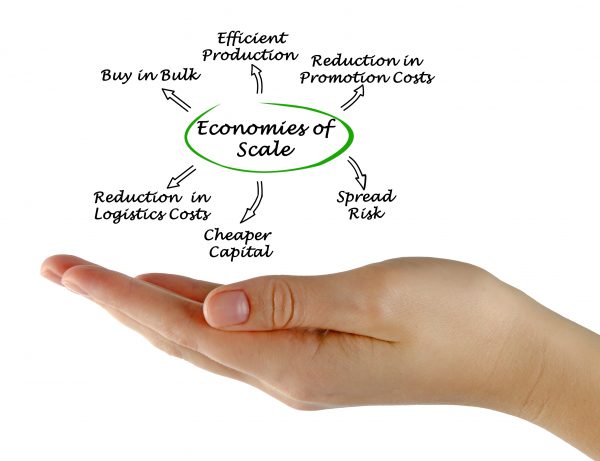Why is Growth Important?
The growth of a business is essential to its survival. In order for businesses to grow, they need to market themselves effectively. A growth marketing agency is a company that specializes in helping businesses grow by marketing them effectively.
There are many benefits to working with a growth marketing agency. One of the most important benefits is that they have the experience and expertise necessary to help your businesses grow. They know how to reach the right audience and how to get that audience interested in your offer.
Growth is important to a business for several reasons.
First, growth shows that the business is doing well and expanding. This can attract new customers and investors, which can lead to further growth.
Second, growth can help businesses to become more efficient.
Finally, growth can help businesses to diversify their products and services, which can protect them from downturns in the economy.
Survival
Growth is important to the survival of a business because it allows the business to expand its operations and increase its market share. Without growth, a business will eventually stagnate and decline.

Therefore, businesses must always strive to grow in order to survive and thrive.
There are many ways to measure growth, but some of the most important indicators include revenue growth, profit growth, and employee count growth.
If a business is not growing in these areas, it is likely that it is not doing well overall.
Strategy
There are many strategies that businesses can use to promote growth. Some common methods include expanding into new markets, launching new products or services, acquiring other companies, and increasing marketing efforts.
However, it is important for businesses to consider which growth strategy is right for them, as not all strategies will be successful for all businesses.
Revenue Growth
Revenue growth is important for a business for several reasons.
First, without revenue growth, a business will eventually stagnate and decline. This is because a business needs to reinvest in order to stay competitive and keep up with customer demand.
Second, revenue growth allows a business to expand its operations and hire more staff, which can help it survive during tough economic times.
Finally, revenue growth is used as a measure of success by investors and analysts, so it’s important for businesses to strive for consistent growth in this area.
Revenue Sustainability
There are many ways to grow revenue, but it’s important that businesses focus on sustainable methods that will produce long-term results. For example, rather than resorting to aggressive marketing tactics that might alienate potential customers, businesses should focus on providing a great product or service that meets customer needs.
By doing this, they’ll be more likely to keep existing customers and attract new ones, which will ultimately lead to sustained revenue growth.
Increased Market Share
By definition, market share is the portion of the total market controlled by a company. It’s a measure of how much of the pie your company has compared to everyone else. And in today’s competitive business landscape, having a large slice of the pie is more important than ever.

There are a few key reasons increased market share is so important to business growth.
- It allows businesses to expand their operations and increase their profitability.
- It provides businesses with the opportunity to enter new markets and reach new customers.
- It helps businesses build brand awareness and equity.
Better Control of the Market
Smaller businesses have less power than industry leaders to influence and control market activity. Also, larger businesses have greater control over the pricing.
For a time, large businesses may set prices at a very low level to eliminate competition. They may also set the price high enough to encourage other businesses to do the same.
Increased Profits
One way to be more profitable is to expand your business and achieve higher sales.
Business growth results from an increase in output, which is the production of goods and services. They will sell this output to increase sales. Revenue will increase even if prices remain the same if the company is growing its sales. Thus, in a growing business, revenues will increase even without an increase in prices.
To increase profits and expand (increase sales revenue), the company should control its costs. They can also increase profits by reducing costs or keeping them at a lower level than before the expansion.
Businesses that grow may also see an increase in profits if they can maintain their marginal cost structure during the growth.
Economies of Scale
Economies of scale are cost advantages that can occur when a company increases its scale of production and becomes more efficient, resulting in a decreased cost per unit.

There are many benefits to economies of scale for growing businesses. The most important benefit is that it allows growing corporations to lower their costs and pass those savings onto consumers, giving them an edge over their competition. What are the benefits of economies of scale?
- Lower long-term unit cost - Internal economies of scale offer many benefits, including lower costs that allow businesses to be more competitive in global markets.
- Increased profits - Scale economies lead to higher profits. This generates a higher return on capital investment and gives businesses the opportunity to speed up growth.
- Greater business scale - A larger business is more stable and less susceptible to external threats, like hostile takeovers. It has a positive impact on the company’s share price and its ability to raise financing.
How is Business Growth Measured?
There are four fundamental ways to evaluate whether your business is growing:
Evaluate Your Customer Base to Determine if it Has Grown
You should not only be looking for more customers but also better quality customers. You should aim to have a customer base that is generating more profit. Therefore, look to build customer loyalty and gain repeat customers.
- Customer lifetime value (CLV) is often used to measure customer value. It is calculated by multiplying the average sales price by the number of repeat transactions and then multiplying this total by the average retention period of each customer.
- Businesses should keep track of the CLV calculation results and work to improve them.
- We can measure these variables using customer surveys, purchase analysis, or immediate feedback (“is it your first time shopping with us?”).
Calculate Revenue Growth
The easiest way to measure company growth over time is with revenue growth. We usually measure growth using the compounded annual growth rate (CAGR). This calculation is especially useful when summing up growth over longer periods, such as 5, 10, or 20 years.
- We calculate CAGR as follows: CAGR = final and starting values times 1, divided by the number of periods fewer than 1. Or (FV/SV1)1/n-1.
- Here, the beginning value is revenue for the first year of the range to be calculated. The ending value is revenue for the last year.
- Learn how to Calculate Compounded Annual Growth Rate so you can keep abreast of this important measure of business growth.
Calculate Workforce Growth
Track new hires and compare the numbers with previous years. As a growing company grows, it should continue to hire more employees. You can express this number as a percentage by dividing the total number of employees at the start of the year by the number of new hires.
Evaluate the Growth of Your Market Share
Market share refers to a company’s share of an industry’s total value. Calculate this by dividing the company’s total revenues by the total revenues of the industry over a period and then dividing this result by the company’s revenue over the same period. It can be a quarter of a year or several years.
- You can determine growth by looking at the company’s market share over several periods.
- If you’re researching a company that has revenues of $1 billion and had $150 million in 2020 (15% of the market) and $170 million in 2021 (17% of the market), your market share has increased by 2 percent over the past year.
What is an Asymmetric Business Model?
Asymmetric Business Models are business models that cross industries by forcing profits to move from one industry to another. Asymmetric business models are based on the economics of complements.

Let’s look at how complements work. A complement in economics is a product that depends on or requires another product.
Here are some examples.
Ink cartridges are essential for home printers to function. Cartridges can complement printers and vice versa.
To work, cars need gasoline as fuel. Gas is an essential component of cars and vice versa.
According to economics, complements are more popular if the complement’s value is lower. If you lower the value of printers (that is, the price of them), more people will purchase printers and more cartridges. Similar to the above, more people will purchase cars if you lower the value of gas.
Let’s look at how companies can grow their businesses to better understand the concept.
- Diversification means expanding into new markets and investing profits in that market. The goal is to make that market a source of profits.
- To grow asymmetrically means to expand into new markets intending to make a profit in the core market but not in a huge new market.
The demand for the product increases when the complement becomes commoditized.
Let’s see how companies incorporate complements into their business models.
We will use three examples to illustrate the economics of complements.
Apple creates value by making it simple for software developers to create millions of apps. Apple has made apps more affordable by making it simple for anyone to create and distribute apps, as well as encouraging developers to compete on price.
These apps drive users to buy iPhones, iPads, Apple TVs, and Apple Watches. Apps’ lower value drives demand for their core product, devices.
Google, with its Android operating system, adds value to the market by making it simple for tablet and handset makers to create smart devices. Android’s open-source version is available at no cost to handset manufacturers.
Google has effectively driven the demand for its core advertising business by commoditizing Android.
Amazon makes hardware like Kindle Fire tablets or Echo devices affordable, thus creating value. These devices are then bundled and locked to Amazon’s e-commerce services. Amazon effectively drives demand for its core e-commerce services by commoditizing the Kindle Fire and Echo.
The Asymmetric business model comprises three major components.
- A company finds a complementary industry.
- Commoditizing a complement creates value.
- They package complements with the core products of the company to generate profits.
How is Growth Marketing Different From Traditional Marketing?
It is useful to consider how growth marketing differs from other marketing functions and domains.

Traditional marketing attempts to convert leads into customers as quickly as possible. Growth marketing, however, aims to guide your audience through every stage of the marketing funnel and ultimately create brand ambassadors.
Growth marketing focuses on retention, while traditional marketing focuses primarily on acquisition. Growth marketing is customer-centric, whereas traditional marketing is company-centric.
This type of marketing is done by using practices to hypothesize, test, and optimize. Search engine optimization (SEO), paid advertisement, content marketing, A/B testing, conversion rate optimization (CRO), email marketing, and social media are the tools that allow brands to collect data and make improvements.
Data-driven insights are what brands need to make product-focused decisions. They can thus avoid deciding based on intuitions or opinions.
Growth marketing differs from the product or other growth functions because it controls most of the channels and uses language that gets immediate responses.
A Strategic Lens That Links to Business Outcomes
Most growth marketing teams target key business results, such as revenue, user growth, and ROI. Growth marketers must develop a strategy for driving customer and user metrics across the entire customer lifecycle, even more than in other marketing or product domains.
Data-Driven Approach
Growth marketers draw on a variety of data sources, including customer and user information, product research, and third-party insights, to guide their approach.
Cross-Functional Collaboration with Growth Partners
With dedicated product and engineering support, growth marketers are typically the most technologically enabled marketers on your team. Their success depends on a strong partnership with engineering, product, and design.
Growth marketing cannot optimize new channels for scale by itself. It is a common mistake to not pair growth marketing and growth product teams in order to achieve product-channel fit across new channels. When there is strong alignment, growth marketing can optimize and scale the channels.
To understand how growth marketing works for your product, it is important to understand your growth model.
Growth Marketing Is One of Three Key Marketing Domains
Growth marketing is one of the three main marketing domains that improve the core product offering for consumers.
Let’s examine how growth marketing differs from brand marketing and product marketing.
Different marketing domains target different target audiences with varying degrees of proximity to the product. These levels of proximity are akin to the concentric circles around an archery target.

Brand Marketing
Brand marketing focuses primarily on reaching the outermost ring of customers and bringing them closer to the center. These are people who are not familiar with your product or your category. Growth marketing allows customers to be attracted by brand marketing because it increases awareness and intent.
Growth Marketing
Growth marketing is about bringing customers from the intermediate rings into the bullseye (acquisition) and keeping them there (retention).
Product Marketing
Product marketing ensures that existing users, who are the target audience, understand the products and the features. This is especially important when you introduce new products to the market. Product marketers must also keep their ears open to see how users might change as they gain new customers.
Pillars of Growth Marketing
Testing
Scientific discovery is only possible if we can test a hypothesis multiple times. Marketing is a complex field that requires you to test a variety of strategies to determine the best strategy.

These tests are most often conducted as an A/B test. They provide valuable data about consumer behavior and design efficiency, as well as brand recognition. A common phrase in growth marketing is “fail fast.” This means that testing can identify what isn’t working, fix it, or edit it again and retest.
Scalability
Growth marketing is popular because it produces sustainable results that scale. Scalability is possible when marketing approaches are scientific. These granular data can help to identify knowledge gaps and areas that need to be replicated, which are beneficial for scaling. Companies can use these results to increase their capital, people, technology, and processes.
Trackability
Analytics is ultimately the currency of growth marketing. Analytics allow businesses to make informed decisions that will propel them forward. This is the fundamental difference between traditional and growth marketing. For example, testing landing pages provides actionable information that can be easily replicated at scale. By not running tests that can be tracked in real-time, brands misuse billions every year.
What are Growth Marketing Agencies?
Growth agencies assist businesses in achieving their revenue growth goals by following a core strategy that includes marketing, sales enablement, and technology.
Growth marketing agencies have a greater influence than traditional digital marketing agencies. They can influence product and service development, as well as marketing KPIs. Because they use hard data to make important decisions, there is a push toward bridging the ROI analysis gaps before any marketing collateral is published.
This may appeal to you if you are familiar with lean startup principles.
It is easiest to describe a growth agency by comparing them with more well-known service providers such as technology, marketing, and sales agencies. This comparison will show how growth agencies can merge an industry that is fragmented through partnerships and central leadership.
A growth agency can help you make better decisions and focus on your growth goals holistically. This will allow you to build on your successes and identify and eliminate problems.
Marketing Agencies
While marketing agencies will pitch many ways to help you grow your business, they will primarily focus on marketing KPIs. This is because they believe that digital marketing is a process. They need to generate KPIs to attribute to their deliverables so they can stay on retainer.
They want your success... but they don’t have the power to make it happen.
Sales Agencies
Similar KPIs will be used by sales agencies, but they focus more on sales. Sales agencies that are more involved address direct KPIs, such as
- Made calls
- Set up appointments
- Opportunities generated
Leadership and sales enablement agencies can help you achieve success with your existing systems and teams by:
- Sales coaching and training
- Sales enablement
- Alignment of sales and marketing
Technology Agencies
Technology agencies enable businesses to operate at their maximum efficiency. Technology tools are often critical to businesses that want to scale and grow, but they are also the most neglected.

These agencies update and modernize customer management systems. They want to automate as many things as possible and will try to influence the decision-making process to ensure that more, rather than less, technology is adopted.
- CRM - Sales management software (Salesforce, HubSpot, Zoho. SAP. etc.)
- Marketing Automation and Analytics (HubSpot Marketo Pardot, etc.)
- Service - record-keeping & customer service (SAP, Oracle, etc.)
- Accounting - Billing automation and bookkeeping (QuickBooks or Xero)
If your goal is to scale your company, this is a great place to start. This will help you decide where to spend your money and when to reinvest.
Growth Marketing Agencies
These concepts are all complementary and combined in growth agencies. They are staffed by data-driven growth marketers who can see the complete picture and then experiment to achieve a single outcome or metric.
A competent growth agency’s ability to scale a business quickly defines them. They also show no bias in their growth plans. They don’t rehabilitate a single concept like inbound lead generation, social media marketing, or SEO.
What are Some Growth Marketing Goals and Metrics?
Pirate Metrics (AAARRR)
You can apply growth marketing to any area of your business. This approach is based on the AAARRR (or Pirate Metrics) framework. This covers all major marketing components: acquisition, awareness, activation revenue, referral, and retention.

Awareness
Awareness is a brand-building effort to educate prospects about your solution and brand. This could include paid campaigns, social media outreach, and SEO-optimized news.
Over the past years, digital advertising has been a tool that marketers used to test their messaging and its impact on website traffic. As the digital advertising landscape becomes more complex and more competitive, growth marketing strategies must be more targeted and result-driven.
Marketers can test multiple messages on the same audience to determine which one generates more engagement. Marketers are increasingly using “brand generation” tactics, such as paid campaigns with signature content offers, to drive brand awareness and conversion.
Social platforms, such as LinkedIn, offer tremendous opportunities for expansion and awareness. Social media should be a key component of growth marketing. Growth marketing teams have a business-critical opportunity to experiment with LinkedIn audience targeting, which can help them drive customer intimacy and awareness.
Acquisition
Acquisition is the act of generating leads and gaining new customers. This can be done through gated content or chatbots.
Slack, for example, acquires users via an email collection form. This use case is a core component of any growth strategy and shows the need to test conversion optimization to maximize form submissions.
Marketers need to consider frequent iteration in this area. This includes everything from messaging, to button orientation, to colors, and form strategy. They use constant iteration to drive conversion increases in these experiments.
In 2023, content syndication and video will play an important role in the acquisition process. Marketers are moving away from webinars and shifting to shorter-form content. Your growth marketing efforts should include a significant increase in content syndication.
Activation
User activation is the act of getting people to use the service or product they have purchased as often as possible. This area includes customer onboarding activities.
Revenue teams and marketers are increasingly focusing on activation. Facebook discovered that users who added seven friends in the first ten days of their account were more likely to return and engage with the platform.
Through the use of customer data and analytics and the promotion of “user-generated content,” customer closeness initiatives can play an important role in growth marketing strategies.
Activation plays an important role in growth marketing, and will probably be a foundational component for demand generation in the future.
Revenue
Revenue refers to all actions that generate revenue for a company, such as customers buying a product, signing up for a service contract, or upgrading their product or service.
Growth marketers can use pricing strategies to address revenue-related metrics. This includes how prices are displayed on the pricing page. They might also consider upselling strategies, such as sending messages to users who are near their plan’s limit.
Growth marketers might employ a pricing page, such as the one used by Drift, and then experiment with the display of the various tiers.
In 2023, revenue analytics will be an even more important component of growth marketing. Data enrichment tools allow you to discover new customer insights and improve your marketing opportunities.
Retention
Subscription companies must ensure customer retention.
This was once too costly and time-consuming, but the technology and pricing have come down quickly. These technologies give you greater insight into customer opportunities and help you design customer outreach and engagement strategies that create a personalized experience for your customers.
Referral
The ideal is for people to be so satisfied with your products or services that they will refer you to other businesses. Marketers can create referral programs to encourage this.
Tesla provides supercharger miles for those who refer others. To increase referrals, a growth marketer might experiment with promotional or incentive methods.
Why Hire a Growth Marketing Agency?
They Bring a Diverse, Big-Picture Team
You can hire a growth agency to help you get a complete view of your company, work with you to determine the best course of action, and delegate execution tasks.

To Learn How to Allocate and Reallocate Resources
There are agencies that charge a percentage for a channel, known as performance marketing agencies. However, an agency that charges a retainer fee allows you to be more creative and be more aligned with your objectives. As a founder, you know well that “adept” is what you are looking for.
A team of agency professionals includes both channel experts and big-picture strategists. Let’s say you work with your growth team to create your growth marketing strategy that revolves around testing Google, LinkedIn, and Facebook ads.
After a few weeks of optimizing and testing, you quickly realize that LinkedIn is not yielding a sustainable customer acquisition cost (CAC). An agency that specializes in performance marketing might recommend reallocating LinkedIn spending to Facebook, whereas a retainer-based agency may focus more on realigning the overall strategy.
You Need a Team that's "Been Around The Block" to Solve Problems
A diverse and experienced agency team brings with it a wealth of resources, an extensive network, and a long record of experience.
Growth marketing professionals will tell you that growth isn’t linear. There is no set path to growth. Facebook can seem like a certain thing. But when an unpredictable twist like iOS 14 occurs, a team of social advertising experts can make a run for it.
They can talk to other experts in the network, look into their “tricks” and solve problems faster than a generalist.
Wrapping Things Up
There are many agencies out there. All have their strengths and weaknesses and you should do your homework before selecting a partner to help you grow your business. While digital marketing was the flavor of the day for many years, growth agencies are gaining favor for their metrics-driven focus on results.
You are not looking for a “growth hacking agency.” Growth hacking is a set of tips and techniques to get quick results - often at the expense of longer-term strategic thinking.
A growth team with strong performance marketing, content marketing, digital marketing, marketing technology, and other skill sets is immensely superior to a growth hacking marketing agency.
If you are looking for rapid and sustainable growth driven by customer acquisition and a growth marketing framework, a growth team is vastly more likely to get you there than a traditional marketing agency.
Use a Growth Marketing Agency to Power Your Growth
Asymmetric, led by former Army Delta Force operator and corporate executive Mark Hope, can help you implement these ideas in your business. You can contact Mark by email at mark.hope@asymmetric.pro, or by telephone at +1 608-410-4450, or you can schedule a complimentary strategy discussion by clicking here. You can follow all of his articles on Medium.


Mark Hope
Mark A. Hope is the founder and CEO of Asymmetric Marketing – a unique agency specializing in building high-performing sales and marketing systems, campaigns, processes, and strategies for small businesses. Asymmetric has extensive experience with organizations across many industry segments. If you would like some help in implementing ideas like these in this article, feel free to give Mark a call at 844-494-6903 or by email at mark.hope@asymmetric.pro.

